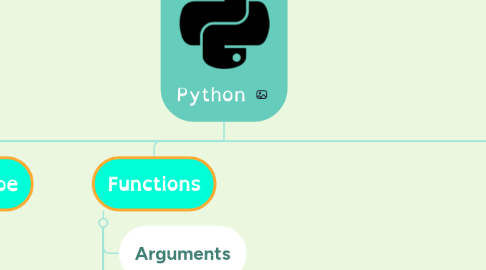Python
作者:Karim mohamed Abdelaziz goda


1. Object Oriented
1.1. Class
1.2. Class variable
1.3. Data member
1.4. Function overloading
1.5. Instance variable
1.6. Inheritance
1.7. Instance
1.8. Extensible
1.9. Instantiation
2. Features
2.1. Easy
2.2. Expressive
2.3. Free and Open-Source
2.4. High-Level
2.5. Portable
2.6. Interpreted
2.7. Object-Oriented
2.8. Embeddable
2.9. Large Standard Library
2.10. GUI Programming
2.11. Dynamically Typed
2.12. Operator overloading
3. Python Basic
3.1. Environment Setup
3.2. Variable Types
3.3. Basic Operators
3.4. Decision Making
3.5. Loops
3.6. Strings
3.7. Tuples
3.8. Dictionary
3.9. Functions
3.10. Modules
3.11. Exceptions Handling
4. Data type
4.1. int
4.2. Basic Syntax
4.3. float
4.4. complex
4.5. boolean
4.6. string
4.7. tuple
4.8. list
4.9. dictionary
5. Functions
5.1. Arguments
5.2. Recursion
5.3. Anonymous Function
5.4. Global, Local and Nonlocal variables
5.5. Global Keyword
5.6. Modules
5.7. Python Package
6. Operators
6.1. Arithmetic Operators
6.1.1. + , - , * , / , ** , //
6.2. Comparison Operators
6.2.1. ==,!=,<>,<,>,<=,>=
6.3. Assignment Operators
6.3.1. *= , /= , -= , += , %=
6.4. Logical Operators
6.4.1. AND
6.4.2. OR
6.4.3. NOT
7. Applications
7.1. Web Development.
7.2. Game Development
7.3. Scientific and Numeric
7.4. Artificial Intelligence and Machine Learning.
7.5. Software Development
7.6. Enterprise-level/Business
7.7. Education programs and training courses
7.8. Language Development
8. Structures
8.1. Built-in Data Structures
8.1.1. list
8.1.2. tuple
8.1.3. set
8.1.4. dictionary
8.2. User-Defined Data Structures
8.2.1. stack
8.2.2. tree
8.2.3. linked list
8.2.4. graph
8.2.5. hash map
